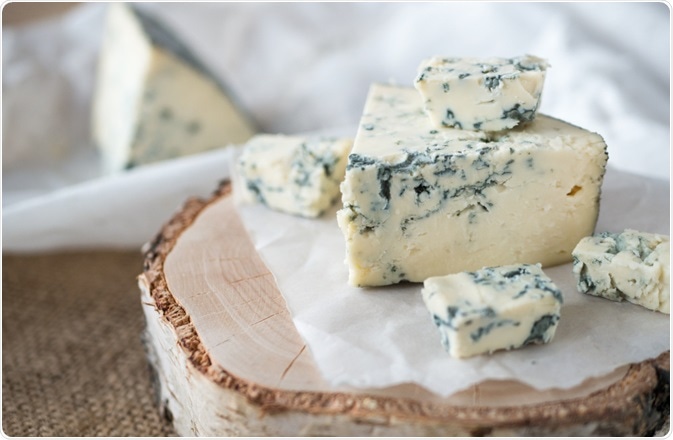Humans have long been innovative species. As we have observed natural processes and phenomena, our curiosity has been a driving force behind our progress. We have experimented with natural ingredients to create a multitude of food that we consume today. This article will discuss the history and current trends of microbial use in the food industry.
.jpg)
Image Credit: Alpha Tauri 3D Graphics/Shutterstock.com
Diet and the Gut Microbiome
The microbiota in the human microbiome plays an important, critical role in our health. Diet is a contributing factor to the optimal function of this biological system and techniques for processing food contribute toward this. Overly processed foods can have a detrimental effect on the proper function of the human microbiome. Techniques to improve the health of this system are therefore critical in food design.
Microbial Application in the Food Industry
Microbes have been used in the production of various important foods and beverages which are part of the average human diet for thousands of years.
Even though we have utilized micro-organisms for the production, preservation, and fermentation of foods for a long time, food microbiology does not have a precise beginning. The development of the discipline has been a gradual process built upon observation of natural processes and experimentation.
There are several specific uses of microbes in the food industry today. Yeast, including Saccharomyces cerevisiae, is used to leaven bread as well as in the fermentation of alcoholic beverages. Certain bacteria, including lactic acid bacteria, are used to produce yogurt, cheese, and pickles.
Some cheeses (blue cheese, Stilton, Gorgonzola, and so forth) use molds to aid in ripening and provide characteristic flavoring. Other uses include citric acid production by fungi, the addition of probiotic supplements in yogurt and drinks, and the production of vinegar.
There are currently more than 3500 traditionally fermented foods in the world. As well as alcoholic drinks, coffee beans, grains, and tea leaves are fermented after harvest to develop their flavor. Drinks such as kombucha and other non-alcoholic drinks are also widely available on the market.
There are several geographic variations in the consumption of fermented foods. As well as cheese and bread, foods fermented from manioc are common in Africa, and fermented fish and soy products are consumed in Asia daily.

Image Credit: O_Solara/Shutterstock.com
Key Events in the History of Food Microbiology
- 7000 BCE – Evidence of fermentation used by the ancient Babylonians to produce beer. Fermented drinks have long been considered safer to consume than local water supplies, which can be contaminated with water-borne diseases such as cholera from sources such as raw sewage. Even today, in underdeveloped countries without access to modern sanitation this is still the case. Wine would not appear until 3,500 BCE.
- 3000 BCE – The first recorded manufacture of cheese and butter by the Egyptians and the Sumerians. As these are fermented foods, they are also much safer to consume than milk, their raw counterpart. Several ancient cultures were also learning to use salt as a preservation technique around this time.
- 1000 BCE – Preservation of shrimp in the snow by the Romans as well as smoked and fermented meats.
- 1665 – Francesco Redi demonstrates that maggots are the larval stage of flies with an experiment that helped to disprove the spontaneous generation theory which had held sway since ancient times. Further experiments by Schwann and Spallanzani were carried out in the next two centuries, although the doctrine of spontaneous generation persisted.
- 1683 – Anton van Leeuwenhoek, the discoverer of the microbial world, examined and described bacteria by using a recent invention: the microscope. His scientific observations and reports were widely published by the newly formed Royal Society in England, leading to the formation of the field of microbiology.
- 1857 – Louis Pasteur (from whose name we get the term pasteurization) demonstrates that microbes cause the souring of milk. Further experiments by Pasteur demonstrated that heat destroyed microbes in wine and beer, and that fermentation was caused by microbial activity. He also discovered that different types of fermentation were caused by different micro-organisms.
- The late 1800s – Legislation to protect food quality starts to be enacted by several governments.
- The 1920s – A severe outbreak of botulism, which is caused by the microbe C. Botulinus prompts the U.S. canning industry to adopt conservative heat treatment processes which reduced the survival of botulism significantly. To date, since adopting these processes, there have only been 5-6 known cases of botulism. The dairy industry, responding to several outbreaks of diseases such as brucellosis, also started to enact stringent microbial-based reforms.
The application of microbiological standards to the food industry has continued unabated since then, with more legislation and the development of processes that ensure the safety of food having been enacted and developed over the intervening decades.
In Conclusion
The relationship between microbes, the human microbiome, diet, and food safety has played a critical role in the development of the modern food industry with its plethora of choice and variety and the consequent improvements in our overall quality of life.
Our knowledge of just how this complex balancing act contributes to the development of human society through the most basic of means, our food, has continued to develop over the last several thousand years. From the earliest fermentation of beer and production of bread to the probiotic foods which have been appearing on supermarket shelves over the last two decades, the application of microbiology to the food industry will certainly continue well into the future.